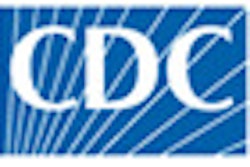Dear Oral Cancer & Diagnostics Insider,
Cancer patients often suffer serious dental problems from chemotherapy and radiation treatments. Many develop muscositis, impaired salivary function, and oral infections, causing their teeth to break off and impairing their ability to chew and swallow.
In this latest Oral Cancer & Diagnostics Insider Exclusive, we talked to a Las Vegas dentist who was inspired by her own mother's bout with cancer to establish the Smiles for Survivors Foundation, which provides dental care for breast cancer victims who have suffered severe oral complications from their cancer treatments.
In other Oral Cancer & Diagnostics Community news, in a recent pilot study, researchers from the University of Nevada, Las Vegas (UNLV) found a low rate of high-risk oral human papillomavirus (HPV) strains among adult patients. But despite declining rates of oropharyngeal cancer in the U.S., the disease is growing among some groups. Click here to read the common characteristics of the few whose saliva tested positive for HPV16 in the UNLV study.
In a related story, an advisory committee for the U.S. Centers for Disease Control and Prevention is now recommending that boys ages 11 and 12 should be vaccinated against HPV, which causes oral, penile, and anal cancers in males and cervical cancers in women. Read what doctors are telling their patients about the benefits of vaccinating their children.
In clinical news, the growing number of HPV-related cancers has prompted the development of a number of new diagnostic tests. A study in Clinical Cancer Research evaluated eight tests in cases of HPV16-derived oropharyngeal squamous cell carcinoma, using viral gene expression as the standard marker. Click here to see which ones are more accurate.
Meanwhile, the growing incidence of oral cancer makes screening for the disease more important than ever, according to a presentation at the recent ADA conference. Click here to read how dental practitioners can use high-tech screening devices to enhance the ability to detect suspicious lesions.
Does race place a role in oral cancer surgery referrals? White patients in the U.S. are twice as likely to be recommended for surgery for oral and oropharyngeal cancer as black patients, according to a study in Community Dentistry and Oral Epidemiology. Read what researchers say accounts for this disparity.
And the U.S. Food and Drug Administration and the National Institutes of Health are conducting a national study of tobacco users to monitor and assess the behavioral and health impacts of new government tobacco regulations. Read about the regulatory changes and risk perceptions involved in the effort.
Head and neck cancer patients had improved outcomes after being treated with drug combinations that prevent cancer cells from damaging DNA, according to a study in PLoS One. Click here to find out how drugs combined with polymerase inhibitors can kill cancer cells.
Finally, researchers from Ohio State University and the University of Michigan have developed a medicated oral patch that allows a chemoprevention drug to release directly into precancerous lesions in the mouth over time. Read how the delivery system provides continuous drug therapy to saliva-coated oral tissue.



















